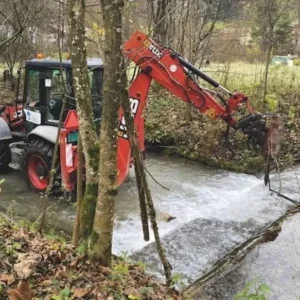
The development of wind turbines in the high seas could unlock offshore potential – but ownership regulations need to be defined, says a report.
While technology could be emerging to facilitate construction of wind farms in regions of oceans that sit outside the control of a single nation, Chatham Partners believes questions over ownership and jurisdiction need to be answered before these projects can become a viable option for investors.
The Hamburg-based boutique law firm, which specialises in renewable energy, called for changes to the legal framework in its report, titled Offshore Wind in High Seas: Unlimited potential beyond national control?.
Felix Fischer, author of the paper and partner at Chatham Partners, said: “Currently, offshore wind developers are only able to consider a third of the available sea when planning new sites.
“The high seas could have the potential to further unlock the expansion of offshore wind beyond what can be developed along coastlines if the industry deems it feasible from an economic and technical perspective.
“However, the technology to allow development in these areas could outpace the legislation.”
Regulation problems facing offshore wind turbine development in the high seas
The high seas, defined as the open ocean and not under any national jurisdiction, make up 50% of the surface area of the planet and cover more than two-thirds of the oceans.
But Chatham Partners’ report says the lack of clear rules covering development in the high seas will be a challenge for using any of these areas for offshore wind.
It says the industry should call for discussions to form a “robust legal framework now, or risk missing the opportunities the high seas could offer in decades to come”.
Global efforts towards decarbonisation have proven offshore wind to be a viable alternative power source to fossil fuels.
But the sector could still face challenges in developing close to shore due to countries’ desires to protect coastal ecosystems, conflicts with local industry and the military, or simply inactivity.
However, Chatham Partners says these issues would not be obstacles in most of the high seas.

The paper highlights that while offshore wind at high seas “clearly has barriers to overcome”, it could “drastically increase capacity by adding almost 70% more construction space to consider”.
But it says if offshore wind companies were to look to the high seas for development, the “lack of a legal framework will become a major obstacle”.
Chatham Partners pinpoints uncertainty around the right of use, ownership and jurisdiction of the high seas and says these issues present a significant challenge.
It adds that building close to shore means the relevant state has the remit to govern and authorise installation and operations of a wind farm under their national laws – but no such jurisdiction or governing body exists for the high seas.
This means that offshore wind on the high seas would pose too great a risk for any company to invest in, according to the report.
Fischer said: “Without a legal framework, these sites will remain out of reach for developers for decades to come.
“If the high seas should become part of the answer to expanding offshore wind development and contribute to global decarbonisation, building a viable legal framework is critical.”
Regulations in other industries
The report notes the fishing industry is regulated in the high seas by regional fishery management organisations.
The International Seabed Authority (ISA) acts as a governing body to authorise public and private organisations to extract minerals from the deep seabed outside their states’ jurisdiction.
According to the report, a treaty for biodiversity beyond national jurisdiction is currently proposed that may introduce “area-based management tools”, as well as various forms of governance – concepts that could include or serve as an example for a framework concerning offshore wind.
But it adds that these precedents provide an example for the offshore wind industry of how many years it can take to build a legal framework, stating that the ISA took more than 20 years of negotiations between member states to formally establish.
The treaty concerning biodiversity has been negotiated since 2004 and Chatham Partners believes it is likely to stay a draft for several years to come.






